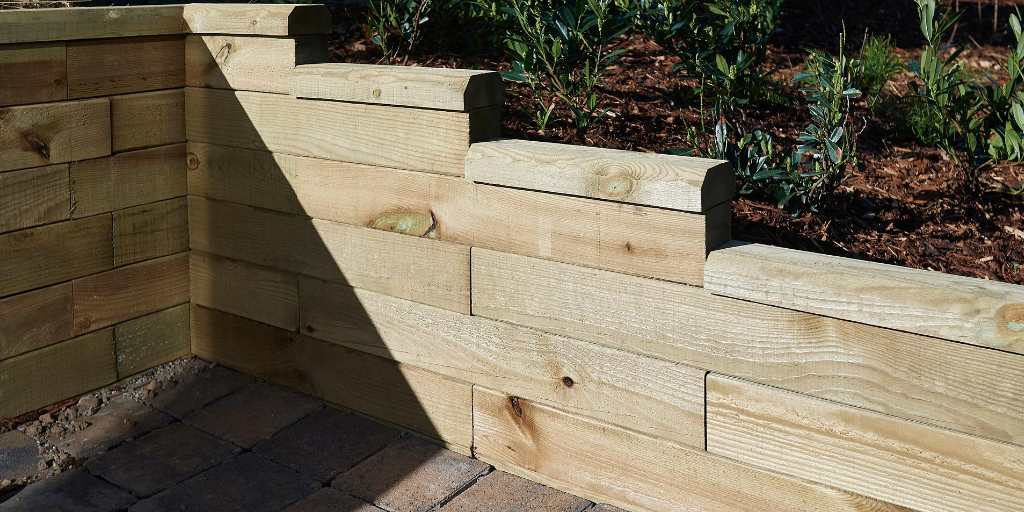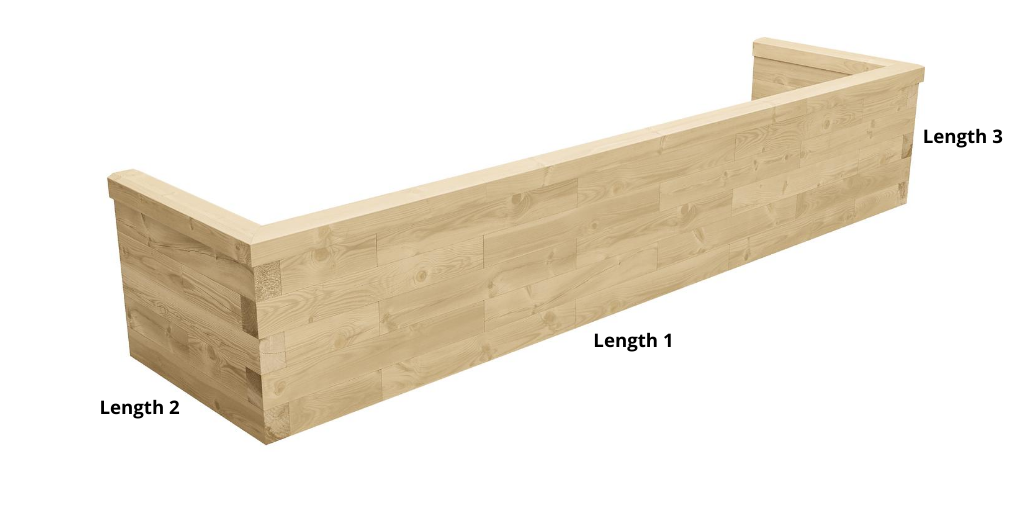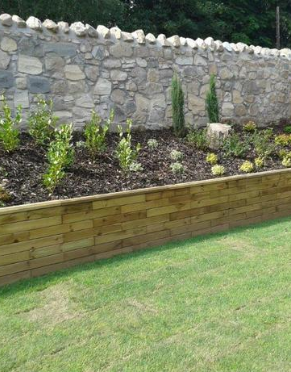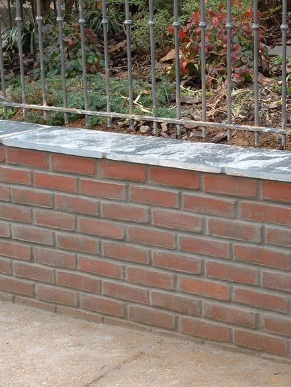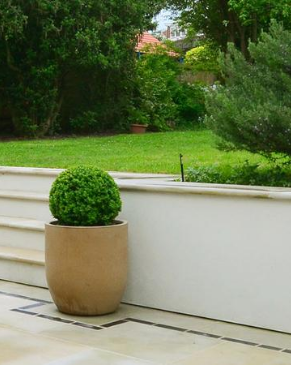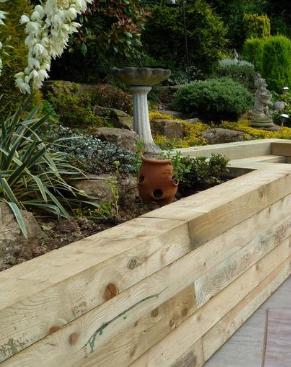How long will a retaining wall last?
Retaining walls can be built for a wide variety of materials, each offers different lifespans and styles, the type of material that is best for you depends one or a number of factors including; style as your garden may have a very specific style or theme i.e. cottage garden, modern or contemporary, wildlife friendly, mediterranean style, coastal etc therefore you may have preferences about the material that you use.
Also consider your circumstances; if you planning on moving house in the next five years you may be making modifications to the garden to make the property more desirable. You may want to include a new retaining wall to make your garden easier to maintain or it may just be that you need to replace an old structure, for information on when you need a retaining wall click here.
Retaining wall materials comparison
Our retaining wall comparison is based on a C-shaped wall of the following dimensions and has been designed as a guide only, costs are based on high street-bought materials and may be higher or lower depending whether you buy directly or through a tradesperson.
Length 1 3m | Length 2 0.6m | Length 3 0.6m | Height 0.55m
WoodBlocX retaining wall
Preparation | Ground levelling, shallow footings, no concrete needed, subase/type 1 for levelling - find out more about this here.
Approx total cost inc materials | around £530 - type 1 £40, sand £20, pea gravel £40, liner £10-£20, WoodBlocX kit £436
Pros | Lightweight, easy to build, durable, zero maintenance, attractive, no foundations needed, no waste, pre-drilled - the pressure treatment penetrates 100% of the wood so it will not rot
Cons | WoodBlocX walls can only built to 1.05m in height, any higher and we recommend terracing the space, modern and traditional capping option available to suit your garden style
Lifespan | Guaranteed to last 15 years expected to have a working life of 30 years
Trades people needed | None
Brick retaining wall
Preparation | Concrete foundations needed, these need to be a minimum 300mm deep and twice the width of the thickness of the wall. Foundations tend to be more expensive than the rest of the materials.
Approx total cost inc materials | Around £700 - Sand and cement £80, concrete £80 pea gravel £40, £144 for frost free class b engineering bricks, two days labour at £180 per day
Pros | Hardwearing against weather and long lasting when built to a high standard
Cons | Brick styles can differ and be difficult to match to older properties. Labour costs. Maintaining the joints ad they can susceptible to frost damage and effeversence when used as a retainer due to the moisture pushing through
Lifespan | 20 - 30 years with maintenance
Trades people needed | Bricklayer - can be built DIY however extra tools and time will be needed
Block and render retaining wall
Preparation | Concrete foundations needed, these need to be a minimum 300mm deep and a minimum of twice the width of the thickness of the wall. Foundations tend to be more expensive than the rest of the materials.
Approx total cost inc materials | around £800 - Sand and cement £80, concrete £80 pea gravel £40, blocks £280, render £72, three days labour at £180 per day - £540 (two to build one to render).
Pros | Decorative - can be painted
Cons | Possible moisture damage and frost cracking the render causing it crumble
Lifespan | 15 years for the blocks, the render may be less and need re-rendering following a particularly bad winter
Trades people needed | General builder - can be built DIY but extra tools/time will be needed
Railway sleeper retaining wall
Preparation | Ground levelling, shallow footings and sharp sand for levelling
Approx total cost inc materials | around £280 - £15 each 2.4m x 200mm x 100mm 9 sleepers £90 base ankers 10 £4 each 40 back of timber fixing screws 250m £23
Pros | No foundations needed, no height restrictions, low cost, can be built without a tradesperson
Cons | Heavy, lots of measuring, cutting/waste, the pressure treatment doesn't always penetrate all of the wood, therefore if cut or drilled this will increase the chances of the moisture getting trapped and the wood rotting quickly
Lifespan | 3-5 years if the wood is untreated, up to 20 years if the treatment process is 100% effective
Trades people needed | None

